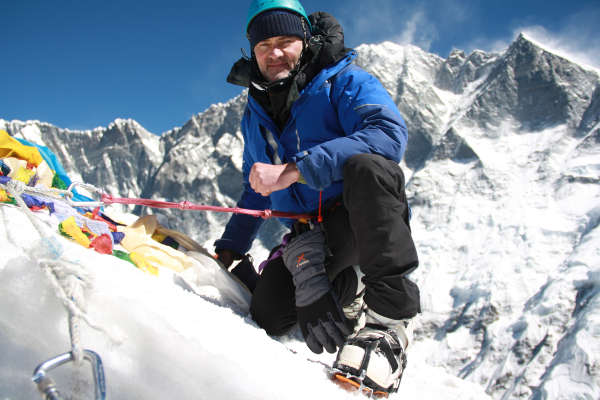Mera Peak is widely regarded as the one of the highest trekking peaks in Nepal. The trek is suited for experienced high-altitude trekkers but does not require technical climbing skills as slopes rarely exceed 40 degrees.
It is an Alpine Grade F (easy) except for the final 30 or 40 metres, which are Grade PD (not very hard). Its ease is what attracts many hikers to it, but don't underestimate it's difficulty.
On this page, you will find a comprehensive and impartial guide to the Mera Peak climb.
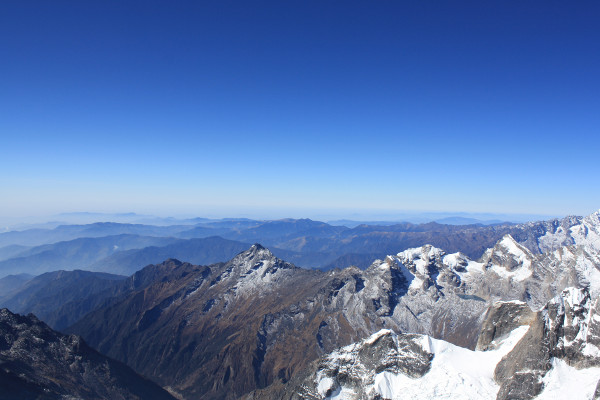
Mera Peak Trek
Trekking to Mera Peak (21,247 feet) will see you crossing glacier terrain.
Although the climbing is straightforward, it is physically demanding. Heavy snow can make things much more so, as do the potential exposure to crevasses. Use of an experienced guide is important.
From the summit of Mera Peak, you will be able to see five of the six highest mountains in the world: Mount Everest (29,029 feet), Kanchenjunga (28,169 feet), Lhotse (27,940 feet), Makalu (27,825 feet), and Cho Oyu (26,906 feet). This is perhaps the most stunning view from a trekking peak in Nepal. You can see as far as India!
The most appealing feature of the Mera Peak climb is the beautiful and uninhabited Hinku Valley, which is filled with a lovely forest. You will rest under mammoth magnolias and pass immaculate forests with banks of raspberries and strawberries.
The trek takes from 16 to 22 days. Outside of Kathmandu and Lukla, you will be spending most of your nights in a tent or basic Nepal tea house. Most groups camp despite there being tea houses all along the trail, a recent phenomenon. As recently as 1994, there was no more than a yak herder’s hut at Tangnag.
Please Note: The Mera Peak hike ascends to some high-altitude points. At its highest point, Mera Peak summit, you will reach an altitude of 6,476 meters (21,250 feet). There are steep sections on this trek where you will ascend very rapidly. It is important to have a clear understanding of the risks associated with high altitude trekking and how the body acclimatises to high altitude.
Where Is Mera Peak?
Mera Peak is situated on the eastern edge of the Khumbu region, which is the orange square below.
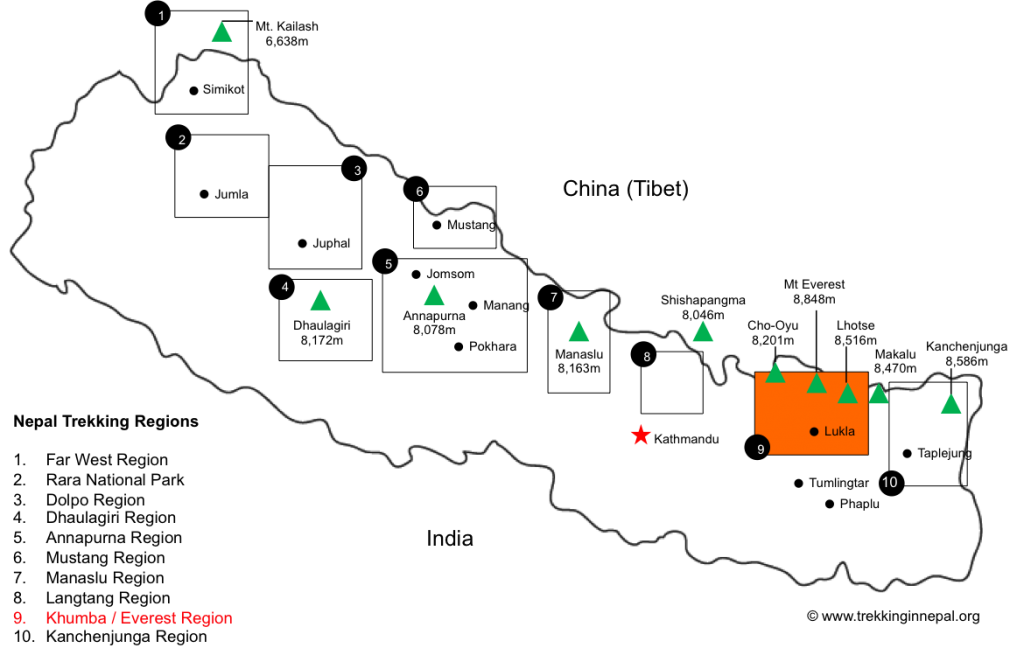
Mera Peak Map
We recommend the following map for Mera Peak - Island Peak/Mera Peak: Climbing and Trekking Map by Sandra Greulich and Sacha Wettstein.
Mera Peak Itinerary
Below is a detailed Mera Peak itinerary. Please note that there are several Mera Peak trek itineraries that can be done.
Below we have laid out the most popular version – 21 days, leaving from Kathmandu.
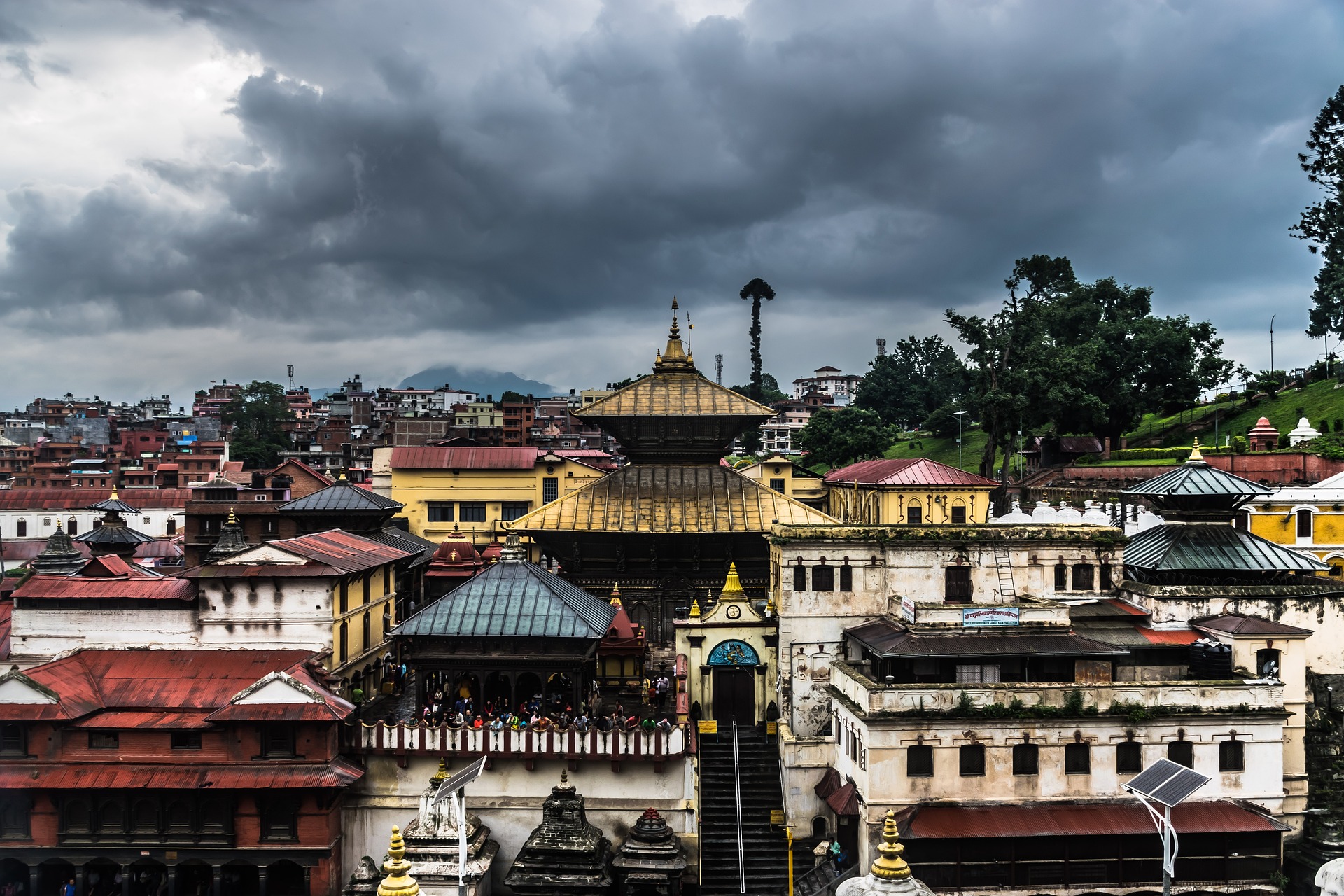
Day 1-2: Kathmandu
You arrive in Kathmandu. Flights are generally overnight, perhaps via Dubai or another Gulf state. I recommend spending a day or two in Kathmandu, there are lots of things to do and see in Nepal.
Day 3: Kathmandu to Lukla
You fly to Tenzing-Hillary, the infamous landing strip at Lukla, taking 40 minutes, and then it is time to walk.
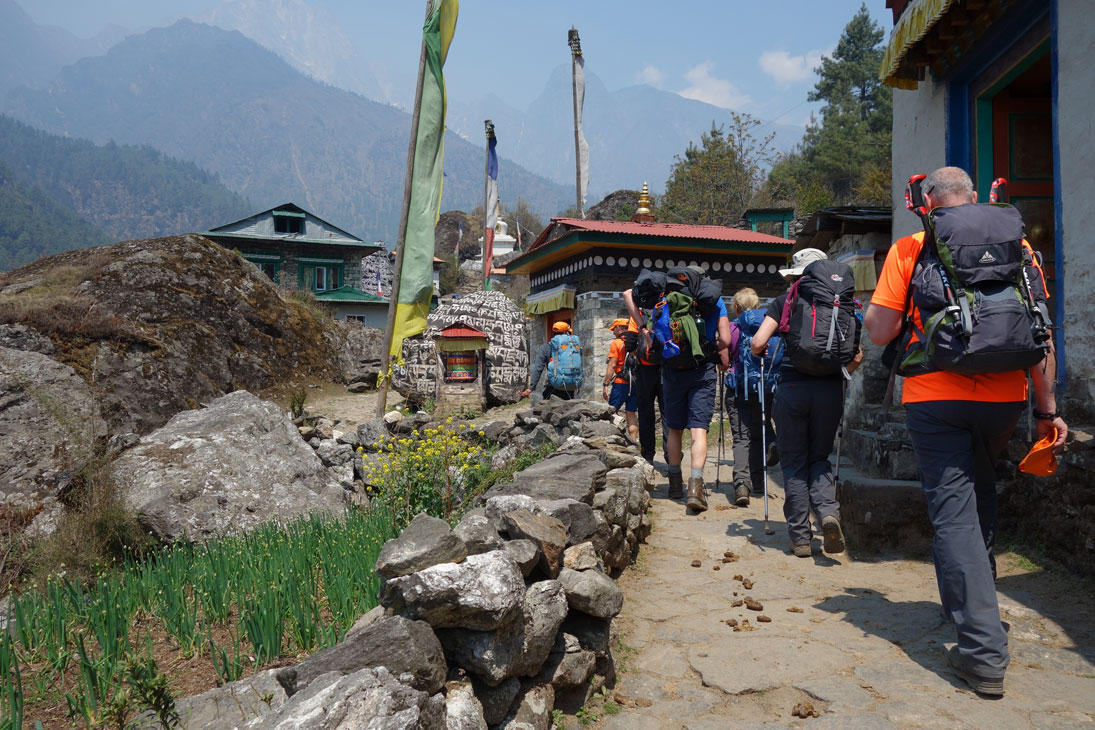
Day 4: Lukla to Pangkongma
You cross the Poyan Khola pass, with Khara Khola in the distance. You make it to Pangkongma.
Day 5: Pangkongma to Nashing Dingma
You ascend to Pangkongma La pass, granting you your first good views of Mera Peak. You then trek down into the Hinku Valley, cross a river using a wire bridge and ascend to Nashing Dingma.
Day 6: Nashing Dingma to Chalen Kharka
You climb to Chalen Kharka through the Surke La pass. Despite being 11,800 feet above sea level, there is still vegetation including rhododendrons and fir trees.
Day 7: Chalen Kharka to Chunbu Kharka
Today, you hike over rough ground. Jannu and Kanchenjunga can be seen. Jannu, 25,295 feet high, is the 32nd highest mountain in the world. Kangchenjunga is rather more impressive: the third highest mountain in the world at 28,169 feet. When you get to Chunbu Kharka, you camp.
Day 8: Chunbu Kharka
This day is for acclimatisation. If you are of an energetic disposition – many nearby walks are possible.
Day 9: Chunbu Kharka to Hinku Valley
Today you trek back to the Hinku Valley once more. You pass the site of flooding in 1998 that resulted from a dam giving way after an unusually strong earthquake.
Day 10: Hinku Valley to Tangnag
You cross a river and, passing grazing yaks, ascend to Tangnag. There are some wonderful tea houses here.
Day 11: Tangnag to Hinku Nup Glacier
You rise above the tree line and ascend Dig Kharka-wards (15,520 feet). This is near the Hinku Nup glacier.
Day 12: Hinku Nup Glacier
By day, you walk onto the glacier to be instructed in the use of crampons and axes, which will be indispensable when you tackle Mera La and Mera Peak.
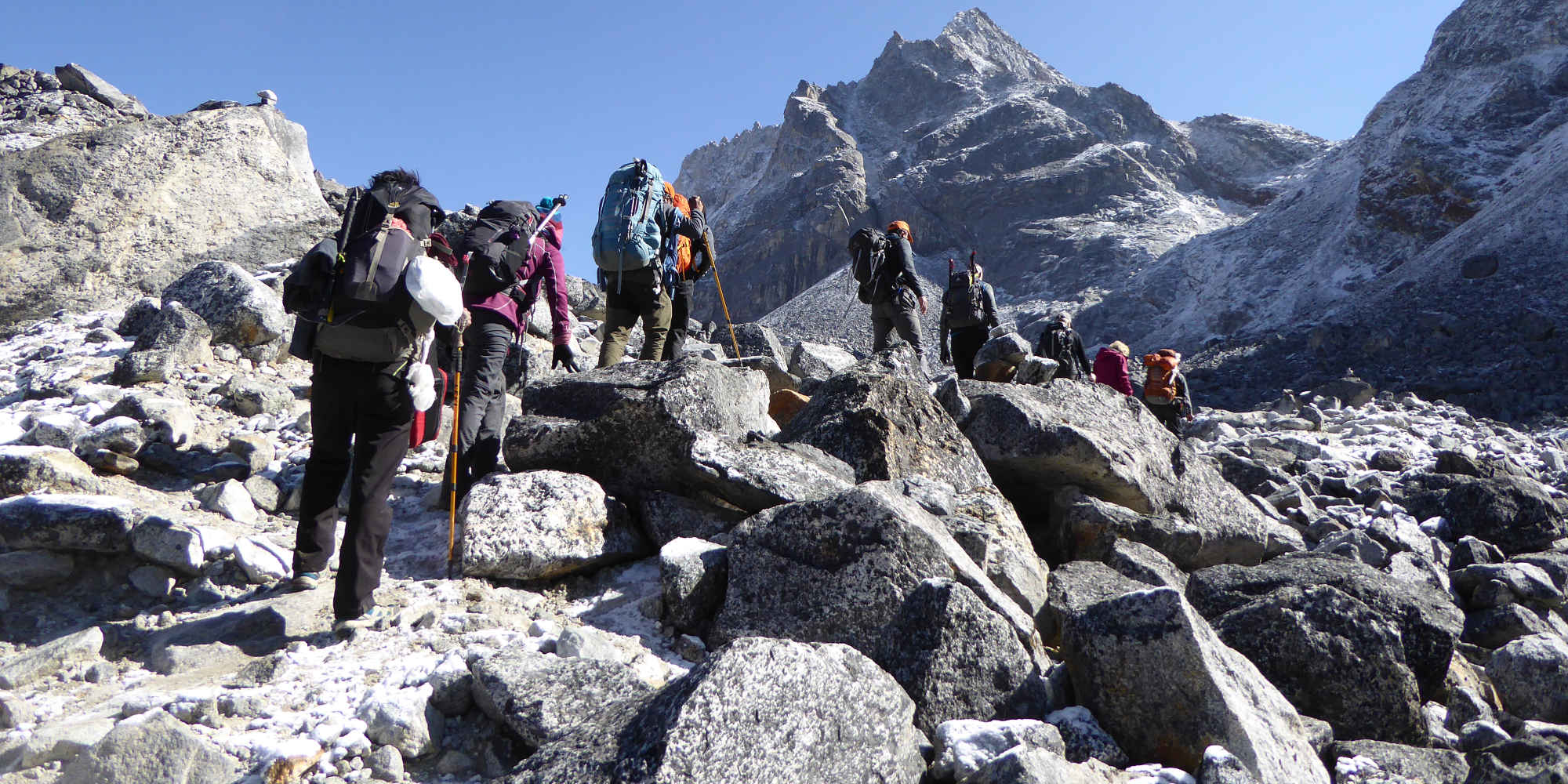
Day 13: Mera Peak Base Camp
Today you arrive at Mera Peak Base Camp.
Day 14: Mera Glacier
Ice school continues on the Mera glacier.
Day 15: Mera Peak
Several crevasses must be crossed to reach the high camp.
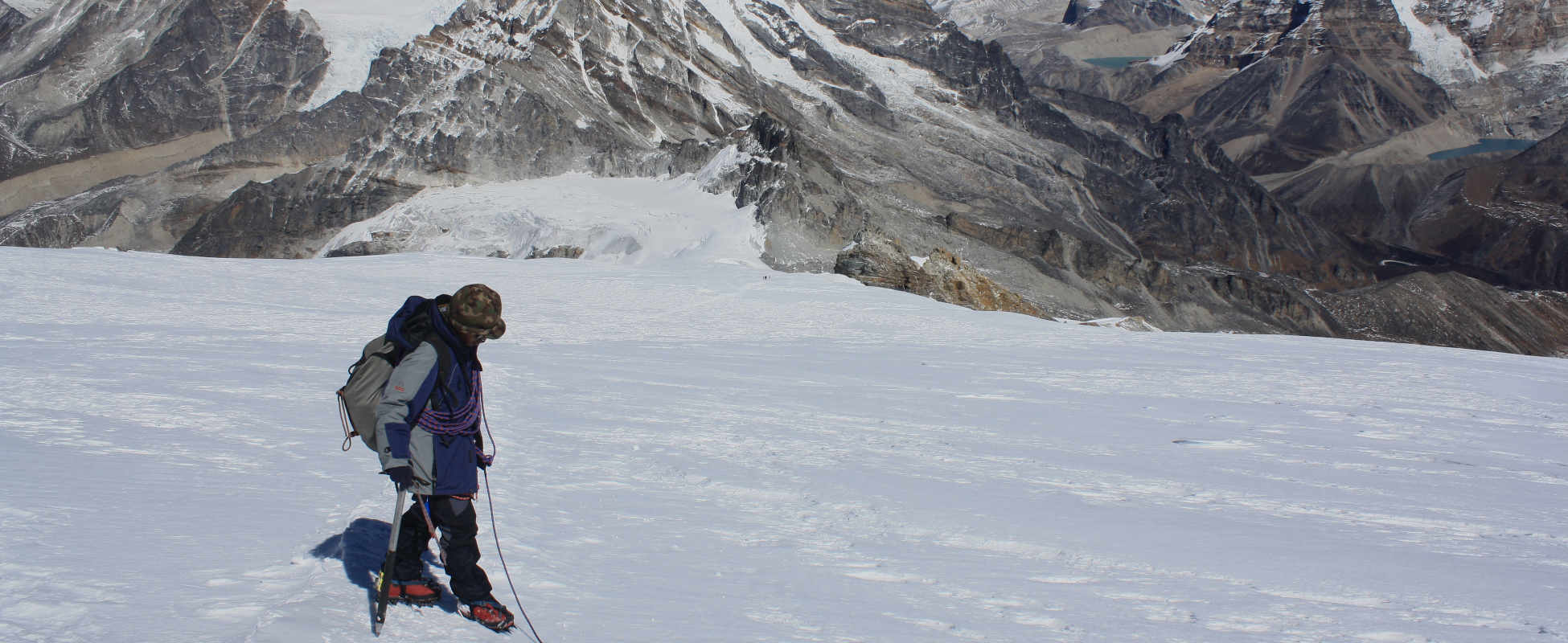
Day 16: Summit Mera Peak
After fixing ropes, you reach the summit of Mera Peak and then descend to Base Camp again.
Day 17: Mera Peak
This is a spare day in case of foul weather.
Day 18-20: Mera Peak to Lukla
You return to Lukla, which could conceivably take as little as three days. From Base Camp, you cross the Zanwa La pass (15,090 feet) and then drop – this is steep – to the Dudh Kosi Valley on the way. You might avail yourself of Lukla’s bars.
Day 21: Lukla to Kathmandu
You fly to Kathmandu.
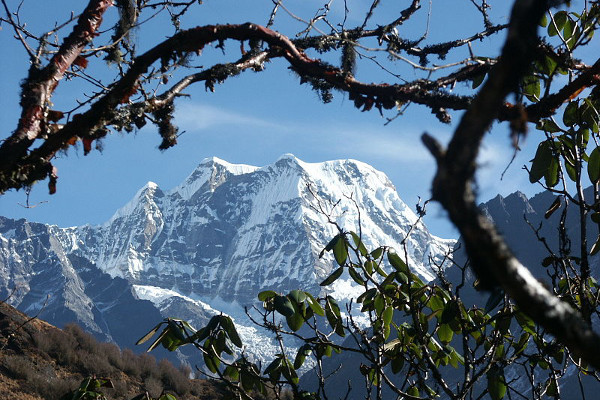
Mera Peak Hike FAQ
When is the best time to trek Mera Peak?
October and November are the best times to trek Mera Peak. These months are peak months for trekking in Nepal. December and particularly January and February are mostly regarded as excessively cold. Trekking the Mera Peak begins again in March and April, which coincides with the Mt Everest climbing season.
How much does the Mera Peak Trek cost?
A Mera Peak climbing tour costs anywhere from $3,500-$5,000 per person depending on group size and Nepal trekking agency. We highly recommend seeking out a quality operator.
Are permits required for Mera Peak?
Yes, a permit is required for Mera Peak, which costs $350 for as many as four people.
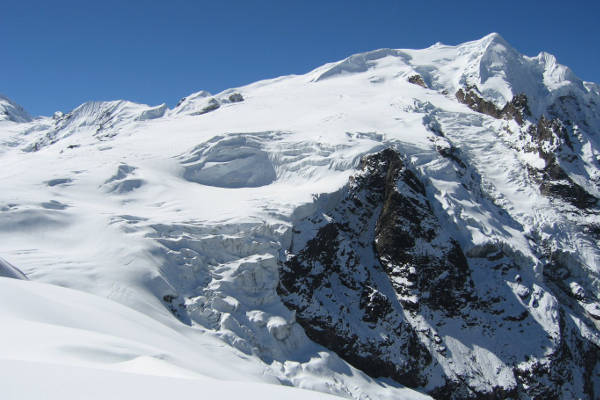
How difficult is the Mera Peak trek?
The Mera Peak trek is considered a moderately difficult trekking peak. Slopes rarely exceed 40 degrees and you will be told everything you need to know prior to climbing the actual peak. Saying this, a very good level of fitness is required and experience of trekking at high altitude is recommended, as the trek is both long and often through heavy snow.
Is altitude sickness a risk on the Mera Peak trek?
Altitude sickness is a risk on the Mera Peak Trek as it ascends to some high-altitude points. At its highest point, Mera Peak summit, you will reach an altitude of 6,476 meters (21,250 feet). There are steep sections on this trek where you will ascend very rapidly. It's important to have a clear understanding of the risks associated with high altitude trekking, and how the body acclimatises to high altitude.
Are there any recommended books for Mera Peak?
For a great book on Mera Peak, we recommend Islands in the Snow: Climbing Nepal’s Trekking Peaks by Mark Horrell.
Tags: Mera Peak Nepal, Mera Peak climbing, Mera Peak trek, Mera Peak itinerary
Continue browsing
See more information on Nepal. Or check out these other Nepal hiking articles:


